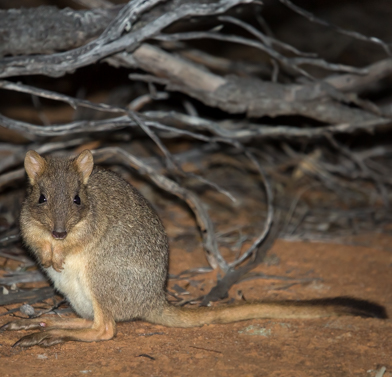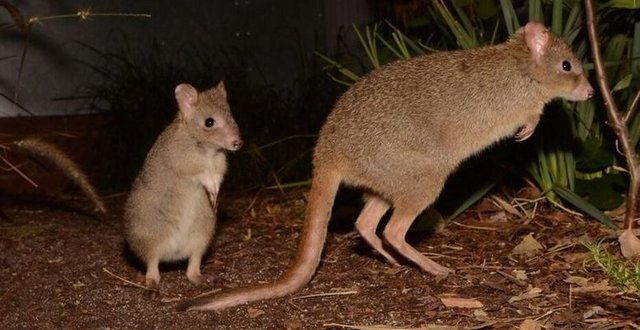Otherwise known as the Woylie.
 )
)
As I so often write when talking about our native animals, the Woylie has almost been exterminated in it’s native habitat.
Frederic Wood Jones, (1879 - 1954), English born anatomist, naturalist and anthropologist wrote in his work - The Mammals of South Australia - 1923-25, "Twenty years ago the dealers in Adelaide did a great trade in selling them (Woylies) by the dozen at about ninepence a head for coursing (the pursuit of animals by dogs) on Sunday afternoons.
Man is a disgraceful creature, destroying anything and everything for his own pleasure.
The Woylie has lived in Australia for hundreds of thousands of years and over the course of a mere 150 years, hunting, predation by foxes and cats has killed off the majority of the species.
The Woylie is a member of the rat-kangaroo family , it moves by hopping and is active at night, digging for fungi to eat.

Being a Marsupial the Woylie raises it’s young in a pouch. The females can give birth to joeys three times a year.
The males is a little over a foot long with a tail of similar length. Maximum weight of the males is 1.8kg- 4lb.
The Woylie is an important ‘ecosystem engineer’ because its digging and foraging helps turn over topsoil, cycling nutrients and improving aeration and water infiltration into the soil.
They primarily eat underground fungi (truffles), as well as tubers, bulbs, seeds and other vegetative products, such as resin. Their foraging also disperses plant seeds and fungal spores facilitating plant recruitment.
Their tail is prehensile, the same as monkeys, and is used to pick up and transport twigs and leaves for nesting purposes.

The average lifespan of a woylie is around 6-8 years.
They breed all-year round and following the birth of the juvenile, a mother will mate again straight away.
A joey will remain in their mother’s pouch for up to 110 days, and they’ll reach sexual maturity by 180 days.

There are many departments working to not only save the Woylie but also to reintroduce this unique Australian marsupial back into predator free environments.
Whiteman Park, a conservation reserve no more than 10km from my home has Nocturnal Woylie walks in September to April. I will book a spot and upload pictures for you all.




